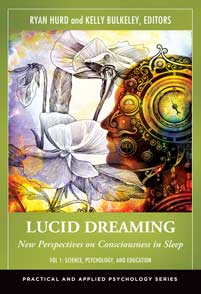 For most of the 20th century, lucid dreaming received almost no attention from mainstream psychologists. Most researchers seemed to think it was impossible to be dreaming and self-aware at the same time (the philosopher Norman Malcolm’s 1962 book Dreaming made exactly that argument). Even if a few people reported having lucid dream experiences, it was easy to dismiss such claims as fantasies, exaggerations, or at best, a trivial gimmick of the mind.
For most of the 20th century, lucid dreaming received almost no attention from mainstream psychologists. Most researchers seemed to think it was impossible to be dreaming and self-aware at the same time (the philosopher Norman Malcolm’s 1962 book Dreaming made exactly that argument). Even if a few people reported having lucid dream experiences, it was easy to dismiss such claims as fantasies, exaggerations, or at best, a trivial gimmick of the mind.
Several years into the 21st century, we now know that all those assumptions about lucid dreaming were wrong. Various degrees of consciousness in sleep are indeed possible, including the awareness that one is in a dream while it is happening. According to demographic research, more than 50% of the general population has had at least one lucid dream experience in their lives. Young people are especially likely to have lucid dreams, but older people have them, too. Lucid dreams have been reported in cultures all over the world, throughout history.
In short, this is not a fringe phenomenon. It reflects a natural capacity of the sleeping mind that is likely innate in all people. Furthermore, this capacity can be strengthened and enhanced by several different methods, with many possible applications in waking life. Western researchers are finally taking note.
In the newly published book Lucid Dreaming: New Perspectives on Consciousness in Sleep (Praeger, 2014), Ryan Hurd and I edited a total of 30 chapters from leading experts on lucid dreaming from all over the world. These chapters include reflections on cutting-edge neuroscience, clinical psychotherapy, education, anthropology, artistic creativity, and religious experience. The book shows how far we have come in understanding this powerful dimension of our dream lives—and how much more there is still to learn.
